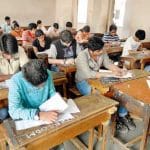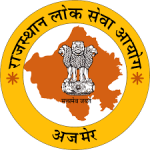What are Sustainable Development Goals (SDGs)?
- The United Nations General Assembly, in September 2015, adopted the global Sustainable Development Goals (SDGs).
- There are 17 SDGs with their associated 169 targets aimed at resolving global social, economic and environmental problems.
- They have replaced the Millennium Development Goals (MDGs) which were adopted in 2000 and expired in 2015.
- They were proposed at the Rio+20 conference on sustainable development.
- They are designed to provide a roadmap for countries to finance and shape government policies over the next 15 years with targets to be monitored and reviewed using a set of global indicators.
- They broadly relate to human dignity, prosperity, protecting the biosphere, and promoting peace and security.
- International development aid, public and private funds, a redesign of tax structures and other international mechanisms have been discussed and may be considered by individual countries as sources of finance for these targets.
Need for SDGs
- Some 795 million people still go hungry and around 800 million people live in extreme poverty, with fragile and conflict torn states experiencing the highest poverty rates.
- Between 2008 and 2012, 144 million people were displaced from their homes by natural disasters, a number predicted to rise as the planet warms, bringing more extreme weather and rising seas.
- Water scarcity affects 40 percent of the global population and is projected to increase.
- Some 946 million people still practice open defecation.
- Gender inequality persists inspite of more representation from women in parliaments and more girls going to schools.
- 57 million children are still denied the right to primary education.
India & SDGs
- The SDGs essentially encompass India’s overall development agenda since they include health and food, cities and infrastructure, energy access, poverty and inequality, water, sanitation, climate change, consumption and ecosystems.
- The specific domains that the SDGs target, align almost exactly with the objectives of India’s Five Year Plans and government schemes.
- India is one of the region most vulnerable to climate change because of its high population, vast and diverse ecologies, and long coastline. Actions that will reduce this vulnerability are tightly related to strategies for sustainable development. Many studies have shown that poverty increases vulnerability to climate change. The first SDG- ending poverty in all forms by 2030, will help in building resilience to climate change.
- Sustainable Development provides an important framework for policymakers and others to understand better how climate change can be mainstreamed into development planning in each sector.
- India is seen as critical for the success of the SDGs, given that improving the lives of 1.4 billion Indians would make a major dent in the goal of improving the lives of all humanity. Even before the SDGs came into effect, India told the UN that it is already implementing the new goals in the form of several initiatives launched by the Indian government.
The positives
- The 17 goals aim to achieve the following wider aims by 2030
- End poverty and hunger everywhere.
- Combat inequalities within and between countries.
- Build peaceful, just and inclusive societies.
- Protect human rights, and promote gender equality and the empowerment of women and girls.
- Ensure lasting protection of the planet and its natural resources.
- Create conditions for sustainable, inclusive and sustained economic growth, shared prosperity and decent work for all.
- The SDGs go much further than the MDGs, because they address the root causes of poverty and pledge to leave no one behind, including vulnerable groups.
- They are intended to be universal, applying to all countries rather than just the developing world.
- They recognize the key role of the private sector in pursuing and financing sustainable development, in partnership with governments and civil society.
- The interconnected nature of the SDGs makes them complex, but also demonstrates complementary benefits from specific goals and targets.
- For instance, clean drinking water and sanitation would enhance health, leading to improved nutrition and well being.
- Sustainable consumption and production would reduce the use of materials and energy, leading to reduction of Greenhouse Gas Emissions, and should improve local ecosystems because of the relation between consumption and natural systems.
- The 13th SDG pertaining to climate change is under the UNFCCC. As a result, the targets for this goal would be determined by the Convention. This safeguards the protections and responsibilities that stem from the UNFCCC.
- SDGs are global objectives that signal what is important for human well-being, and they incorporate many of the lessons learned from decades of development.
Criticism
- While these goals have been accepted in principle, they have also been criticized from various quarters for being too large in number, and too wide or too limited in their scope.
- Reaching the targets is another tedious task because no specific funds have been set aside to attain them.
- Difficulties of data availability and poor capacity at various levels can hamper India’s progress towards the SDGs.
- According to a report, only 29 percent of the targets are well defined, 54 percent are ambiguous and 17 percent are non-essential.
Way Ahead
- While attaining all the SDGs on time may be near impossible, there are several tasks that can be addressed.
- These include, identifying what data we already have used or could use, finding proxies, setting up new institutions (policies, rules and regulations), improving Centre- State coordination to reach the goals, and building capacity.
- We have a national level framework for the achievement of these goals. But a mechanism to reach out to the panchayat level has not been laid out clearly. Since most of these goals, including the ones on poverty alleviation, require focus at the grassroots level, the involvement of local bodies is important. A mechanism to reach out effectively to local self-government bodies has to be evolved to achieve the SDGs by 2030.
- Monitoring, which involves collection of data and identification of bottlenecks in implementation, should also be done at the local level. The goals cannot be achieved unless there is political commitment and an institutional mechanism for monitoring.
- While MDGs helped improve the overall health of nations, the focus was on the aggregate targets ignoring inequities within countries. To understand the real progress and challenges there is a need to disaggregate data by gender, economic status and geographical area.











